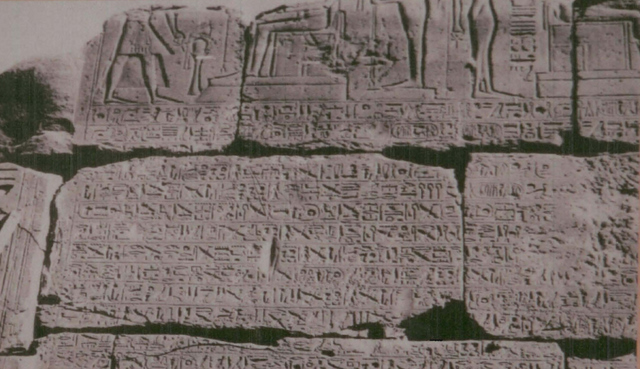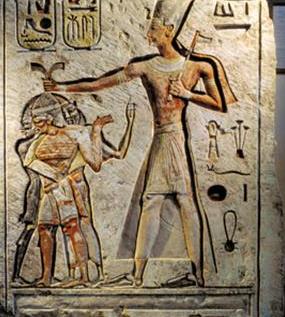After long years of conflict between the two empires, the Egyptian pharaoh Ramesses II and the Hittite emperor Hattushili III sealed a state treaty. A version prepared by Hattushili and written on a silver tablet was sent to Egypt, where Ramesses commissioned its text to be engrave on a stele erected in the Karnak Temple.
Ramesses II of Egypt and Hattushili III of Hatti, concluded an agreement between equals that carefully emphasizes the equal status of both signatories. The Hittite vassal treaties generally include an introductory prologue in which the relationship between the Hittite empire and the subject state is recounted in historical perspective. Therefore, they provide valuable historical information. However, they have to be read and interpreted critically, since they reflect a Hittite version of the past and do not shrink back at all from spinning events to suit contemporary aims.
The two states exchanged copies of the treaty—with the Hittites inscribing a tablet and sending it to Egypt, and the Egyptains inscribing a tablet and sending it to the Land of Hatti. The tablet found at Hattusa , is the Egyptian version of the treaty, written in Akkadian (a Semitic language that served as the lingua franca of the ancient Near East).
In celebration of this “victory,” Ramesses also had battle narratives and relief scenes carved on the walls of temples at Abydos, Karnak, Thebes, Luxor, Abu Simbel and el-Derr.
An English translation of a passage from the treaty that Ramesses signed with the Hittite king Hattusili III can now be found above the entrance to the Security Council of the United Nations in New York City- “Ramesses, Great King, King of Egypt, is in good peace and good brotherhood with Hattusili, great king of Hatti …”
Bryce, Trevor, “Last Days of Hattusa,” Archaeology Odyssey Magazine, Jan-Feb 2005.
Istanbul Archaeology Museum
“Look on My Works,” Archaeology Odyssey, Sep-Oct 2003.
Relief from Egyptian Museum

